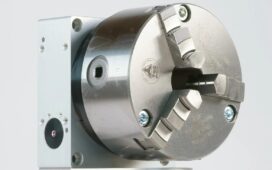Traffic control is a science. It’s also an art. And it’s one of the most important aspects of road safety. Traffic control safety is a critical part of any integrated road management plan. Traffic control safety is defined as: “the protection of all persons, vehicles and property from undue hazards and risks incident to the use of highways.”
Traffic control involves using signs, signals and markings to communicate with both drivers and pedestrians. The goal is to improve traffic flow, reduce congestion and enhance public safety by providing consistent guidance to motorists and pedestrians alike.
The process starts with an analysis of existing conditions — including traffic volumes, speeds and pedestrian activity — along with a review of crashes or incidents that have occurred in the area. The results are used to develop a traffic plan that will address those issues while meeting federal standards for traffic control devices across all modes (vehicular, pedestrian and bicycle).
The Benefits Of A Road Management Plan
Road management plans are important because they help you to make informed decisions about your roads. They can help you to identify problems, find solutions and make improvements to your road network. By having a road management plan in place, you will be able to keep track of all the traffic on your roads and make sure that you are aware of any issues that may arise. The benefits of having a road management plan include:
Keep Traffic Flowing Freely
When there are too many cars on one road, it can cause congestion and slow down travel times for everyone. Having a road management plan in place means that you can ensure that there is always enough space for all the cars on each individual route so that no one has to wait for too long.
Safety
A road management traffic plan can help keep drivers safe by reducing the number of accidents. When drivers know what to expect on the roads, they can react accordingly when something unexpected happens, such as an accident or construction zone.
Efficiency
If drivers know exactly where they’re supposed to go, then it becomes easier for them to get where they want to go more quickly. This also helps reduce traffic congestion because there’s less confusion about where people should be going at any given time.
Cleanliness
Having rules about where people can park their cars makes it easier for those who are picking up trash or cleaning up after accidents to do their jobs efficiently without interfering with traffic flow too much.
Environmental Impact
Road management plans should look at ways in which environmental impact can be minimized by creating greener solutions for driving, parking and walking. For example, new parking schemes could be introduced which would reduce the need for people to park their cars on residential streets by providing off-street parking facilities which are covered by CCTV cameras so that anyone who parks illegally can be fined instantly!
Identifying Problem Areas
You may be able to identify problem areas before they happen by monitoring traffic flow and investigating incidents. This will enable you to take preventative measures such as speed bumps or calming traffic measures before accidents occur.
Keeps Everyone On Track
A good traffic plan will help keep everyone on track with what needs to be done and how long each part of the project should take. This means less mistakes and less time wasted trying to catch them up when they happen!
Improved Customer Experience
When customers have a good experience at your business, they will be more likely to come back and recommend you to others. A road management plan can help you improve your customer experience by making sure that all entrances and exits are clearly marked, traffic flows smoothly through your parking lot or roadway, and drivers feel safe at all times while driving through your property.
Reduced Congestion
Traffic plans can be used to manage how vehicles use the same roads on different days or at different times of the day. This can reduce congestion by ensuring that vehicles aren’t competing for space at the same time.
Prevent Accidents
By managing traffic flow, you can prevent accidents by making sure that vehicles do not collide with each other or come into contact with pedestrians or other vehicles on the road. This will help keep everyone safe and reduce insurance claims against your company.
Final Thoughts:
Traffic plans are designed to eliminate hazards and increase efficiency. Hopefully, this article will help you to create a safer and more convenient environment for drivers, pedestrians and cyclists alike.







